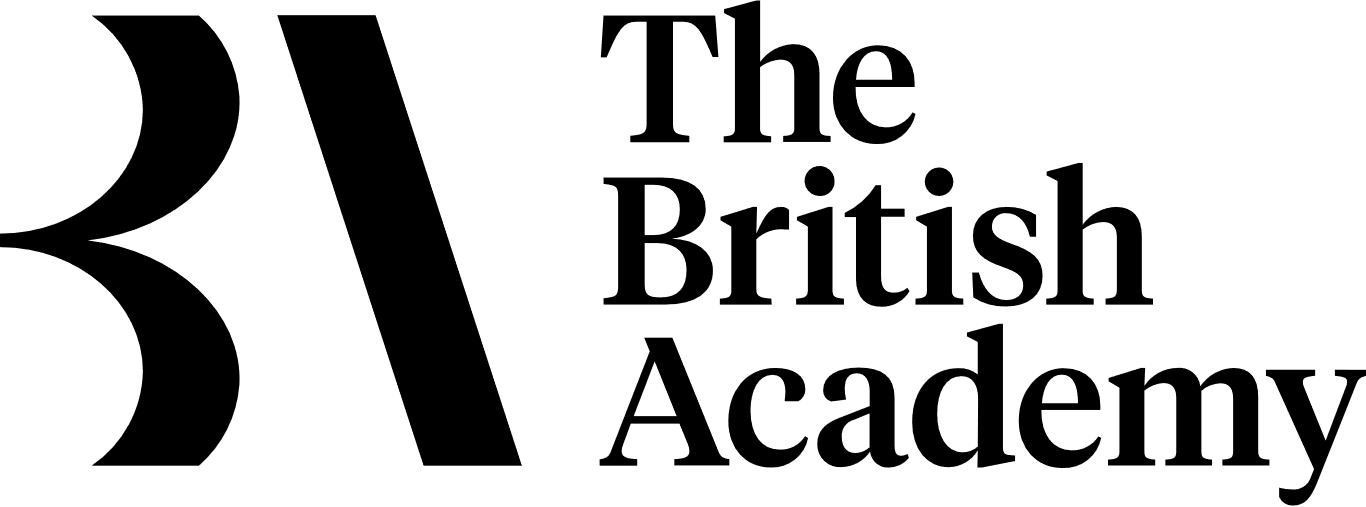TEACHER INTRODUCTION BIRDWORDS AROUND THE WORLD AN EWA
BIRDBRAIN TEACHER’S NOTES © ADT 2004 COMPILED BYDEAR PRESCHOOL OR KINDERGARTEN TEACHER WELCOME TO
PERSON SPECIFICATION CLASS TEACHER ESSENTIAL DESIRABLE
PERSON SPECIFICATION CLASS TEACHER 2018 ESSENTIAL DESIRABLE
SCU TEACHER EDUCATION PROGRAM PROFESSIONAL DISPOSITIONS OF
TEACHER RECRUITMENT DIFFICULTY CENSUS FREQUENTLY ASKED QUESTIONS
Birds: What do we call them?
![]()
Teacher Introduction
BirdWords Around the World: an EWA project
The Ethno-ornithology World Atlas (EWA) is a worldwide collection of cultural material relating to birds. It is made up of contributions of folk-names, ecological knowledge, stories, songs, poetry, artwork, and other materials developed by users, who may publish their items or collections to the general public or to a restricted community of their choosing.
The BirdWords projects are developed by EWA to support local schools, museums, conservation groups, and communities who value diverse cultural knowledge of birds in multiple languages. BirdWords publications include free downloadable bird name posters in several Indigenous languages, the BirdWords Across Continents storymap, which maps the many names of several birds across their migration flyways, and a series of lesson plan activities to choose from.
Activity summaries
Activity 1: What do we call them?
Invent names for birds, to explore common naming features, then compare that with local birds’ names to see what that tells us about how we see them.
Activity 2: What do we think of them?
Explore bird idioms in your language through a bingo game then discuss what that tells us about how we see the different birds.
Activity 3: How do we group them?
Group cards of birds as many different ways as you can think of, to explore the different options for classification / taxonomy.
Activity 4: What do they sound like?
Discuss bird sounds, then explore a) warblish (phrases birds are “saying”), bird-specific onomatopoeia (eg “cock-a-doodle-do), or general vocabulary for bird sounds (eg “chirrup”).
Activity 5: Where are they going?
Look at where your local swallows are going next and send postcards to another school or group on the migration route.
Activity Packs
Teacher’s Overview Table
An at-a-glance overview of all five activities, summarising…
Title
Topic
Main activity type(s)
Materials / Prep needed
Main subject link
Possible extension subjects
Link with previous / next activity
Topics
The activities cover five aspects of how our cultures and languages relate to birds:
What do we call them? Inventing and exploring common names
What do we think of them? Bird idioms
How do we group them? Different ways of categorising birds
What do they sound like? Warblish / Onomatopoeia / Bird-sound vocabulary
Where are they going? Swallow migration routes
Activity packs
Each activity pack contains…
session notes (1 full page):
Overview: a summary of the activity; the activity’s purpose; list of materials needed
Teaching notes: staged instructions for class, with suggested timings
Suggestions for follow-on activities: a wide range of extension activities for multiple subjects
photocopiable resources: Any discussion prompts, handouts, and printable cards to support the activity. The file names will tell you how many copies to print per student. Some resources will need cutting up, eg discussion cards print four to a page.
online resources: links to information and bird song for your area and local birds
Running order
You can use the activity packs individually or as a batch. They’re arranged in a suggested running order, but feel free to adapt this.
Levels and age-groups
From 8 years old through to adult groups
Flexible timing
Each activity takes minimum 20 minutes. They can easily be extended, according to age and level, by…
allowing extra time for each staged instruction, especially the discussions
including follow-on activities as part of the class time
Colour coding
Each activity is colour-coded on the Teacher’s Overview Table, the teaching notes, and in the screen-display background of handouts. (The screen-display background will not print out.)
If you can use different coloured paper for each activity, this can help students remember them more clearly, but it’s not essential.
Methodology
Multi-level
A combination of guided discovery, process teaching, and defined tasks mean the materials work across ages, from around 8 years old through to adult education. Multi-level classes can also use the same exercises at different depths. The activities can be enjoyed and completed at a
simpler surface level or with more nuance and sophistication.
Guided discovery & local knowledge
Each activity has clear learning points and students explore different aspect of bird knowledge and ethnobiology by exploring their own knowledge, ideas, and language. Some Western scientific principles are introduced (such as classification systems) but these are not given primacy, in keeping with ethnobiological principles.
Collaborative and fun
Most of the activities are designed around working in small groups, with a playful approach, which creates more stimulation for ideas and reduces pressure on individual students.
Resource-light
Classrooms and groups around the world have very different resources available. As much as possible, the activities are designed to work with minimal resources, with the option to do boardwork instead of copying handouts. The classroom resources the activities definitely need are…
bird cards for Activities 1 and 3 (they share the same set of cards), ideally colour
internet access for the teacher to play birdsong to the group, for Activity 4 (eg a mobile phone)
Using suggested answers
When you give suggested answers, don’t treat these as the Official Answers. Rather, ask students if they can add anything to that, if there’s anything there they hadn’t thought of, and if anything surprises them. Let it expand discussion, not close it down.
Join BirdWords Around the World
As part of the activities, you are invited to research or collect local knowledge about birds – names, stories, idioms, groupings, warblish, songs – and upload it to EWA using an account you create for yourself, your classroom, or your community (If you’re under 16, your teacher or guardian will help with this part.) Subscribe to the BirdWords Global Classroom newsletter to stay in touch.
Go to EWAtlas.net/global-classroom for e-versions of all handouts, links, and instructions.

E WA
is a collaboration between: Oxford University and BirdLife
International, supported by: The Arts & Humanities Research
Council, Connected Communities, and Creative Multilingualism. ALL
BirdWords MATERIALS licensed CC BY-NC 4.0 International
WA
is a collaboration between: Oxford University and BirdLife
International, supported by: The Arts & Humanities Research
Council, Connected Communities, and Creative Multilingualism. ALL
BirdWords MATERIALS licensed CC BY-NC 4.0 International



(TEACHERS’ SHARING) DRESS SENSE AND APPRECIATION OF FASHION AIMS
0 CADET TEACHER ACADEMY CADET TEACCADETHER ACADEMY CADET TEACHER
1 ST MARCH BRATISLAVA DEAR MY ENGLISH TEACHER I
Tags: around the, birdwords around, around, world, introduction, teacher, birdwords
- WYKAZ NIERUCHOMOŚCI PRZEZNACZONYCH DO SPRZEDAŻY W DRODZE PRZETARGU USTNEGO
- INGENIERO EN INFORMÁTICA TERCER CURSO FACULTAD DE INFORMÁTICA UNIVERSIDAD
- TESTING EXPO CHINA – AUTOMOTIVE 2021 HOTEL BOOKING
- EL ALGORITMO AO 1 HAGAMOS QUE G CONSISTA SOLAMENTE
- MODELO Nº 02GR APROBACIÓN DEL CALENDARIO DE COMPROMISOS
- Facilitator Guide Introduction to Basic Data Analysis and
- AS FILED WITH THE SECURITIES AND EXCHANGE COMMISSION ON
- ROZLICZENIE FINANSOWE SEKCJI …………………………… ODDZIAŁ ……………………………… DO PRZEDSTAWIENIA ODDZIAŁOWEJ
- GRAĐA I FUNKCIJA ĆELIJA TKIVA I ORGANA U FIZIOLOŠKIM
- CAJÓN DE SASTRE NOTICIAS DE ACTUALIDAD REFLEXIONES Y
- DONDE ESTUDIAR Y COMO ESTUDIAR EN UNA HABITACIÓN
- SUGGESTED AGENDA TAYLOR COUNTY BOARD OF COUNTY COMMISSIONERS PERRY
- JOSÉRODRIGO CÓRDOBAPACHÓN SCHOOL OF MANAGEMENT ROYAL HOLLOWAY UNIVERSITY OF
- CARE AND SUPPORT WORKERS (PAY EQUITY) SETTLEMENT PAYROLL PROCESSING
- ESTATUTS DE LA FUNDACIÓ FESTA MAJOR DE VILAFRANCA DEL
- CONTACTS – SECTION 223(A)(7) PROJECT NAME FHA NO PROJECT
- SPECTRUM SIGNAL PROCESSING COPYRIGHT ©2021 SPECTRUM SIGNAL PROCESSING INC
- UNIVERSIDAD COMPLUTENSE MADRID SERVICIO DE ACCIÓN SOCIAL ESCUELA DE
- NÓSTOI HOMENAJE A ELENA HUBER “UN NUEVO POEMA DE
- ART 14 – CATEGORIE E SOTTOCATEGORIE ALLEGATI LE CATEGORIE
- ANEXO I SOLICITUD DE INSCRIPCIÓN EN EL REGISTRO MUNICIPAL
- TYP REKORDOWY KILKA DANYCH RÓŻNEGO TYPU KTÓRE WSPÓLNIE
- STATS ‘REFRESHER’ MULTIPLECHOICE QUESTIONS 1 WHICH OF THE FOLLOWING
- T EMPORARY STORAGE CONTAINER INFORMATION SHEET THIS INFORMATION
- LEDERFORENINGEN UNDER DANSK FÆNGSELSFORBUND OPBAKNING TIL LEDELSEN PÅ ANSTALTEN
- sem-20-guc3ada-de-trabajo-indivi-y-grupal-promocion-de-la-salud-1
- 3 KARTA EWIDENCJI ZAJĘĆ DYDAKTYCZNYCH PROWADZONYCH PRZEZ (TYTUŁYSTOPNIE
- MAPREPLACE (CCP4 UNSUPPORTED PROGRAM) NAME MAPREPLACE COMBINE PARTS
- MILENIJ HOTELI DOO SA SJEDIŠTEM U 51410 OPATIJI V
- AZ IDEGRENDSZER KÓROS MŰKÖDÉSE BETEGSÉGEI 1 AZ AGY A
 VENOVANE JUROVI KOTULICOVI BUNTOVI KTORY JE AUTOROM PRAKTICKY VSETKYCH
VENOVANE JUROVI KOTULICOVI BUNTOVI KTORY JE AUTOROM PRAKTICKY VSETKYCH NAME OF JOURNAL WORLD JOURNAL OF GASTROINTESTINAL ONCOLOGY MANUSCRIPT
NAME OF JOURNAL WORLD JOURNAL OF GASTROINTESTINAL ONCOLOGY MANUSCRIPTBARTONONSEA GOLF CLUB MILFORD ROAD NEW MILTON HANTS BH25
MEN ARE DIFFERENT BY ALAN BLOCH IM AN ARCHAEOLOGIST
EL PROYECTO PERSONAL DE VIDA MANUEL MARROQUÍN (U DEUSTO)
 PROTOCOL TEMPLATE ON THE INDENTATION AND THICKNESS MAPPING OF
PROTOCOL TEMPLATE ON THE INDENTATION AND THICKNESS MAPPING OFHR 3132 CHILDREN’S SAFETY ACT OF 2005 THE CHILDREN’S
 TABLE OF CONTENTS OVERVIEW OF THE GUIDE INTRODUCTION THIS
TABLE OF CONTENTS OVERVIEW OF THE GUIDE INTRODUCTION THISD M DEL 20 NOVEMBRE 1998 REP N 176RC
FOSTER CARERS LEARNING LOG NAME DATE WHAT WAS
 ZAŁĄCZNIK NR 1 DO IDW FORMULARZ OFERTOWY DOTYCZY PRZETARGU
ZAŁĄCZNIK NR 1 DO IDW FORMULARZ OFERTOWY DOTYCZY PRZETARGUACTA FINAL Y RESOLUCIONES I REUNION DE LA AUTORIDAD
FORMULÁRIO DE FESTAS E MANIFESTAÇÕES POPULARES NÚMERO (CAMPO
CHAPTER 1 PEOPLE AND GOVERNMENT CHAPTER ONE – PEOPLE
 8 FALL 2008 SPANISH 265 SPANISH FOR COMMUNICATION SOCIETY
8 FALL 2008 SPANISH 265 SPANISH FOR COMMUNICATION SOCIETYSTUDENTS WITH VISUAL IMPAIRMENTS IN HIGHER EDUCATION INSTITUTES KOUTSOKLENIS
ESTADO DE MATO GROSSO PREFEITURA MUNICIPAL DE VÁRZEA GRANDE
PROPOZYCJA PRZEDMIOTU FAKULTATYWNEGO 20142015 PROWADZĄCY PROF ZW DR HAB
НАЗИВ И АДРЕСА СЕДИШТА КЛИЈЕНТА БАНКЕ ОВЕРЕНИ ПОТПИСИ ЛИЦА
VEDLEGG UNDERLEDD OG AKSJESELSKAP SØKNADSÅRET 2015 FORENKLET MODELL (REVISOR